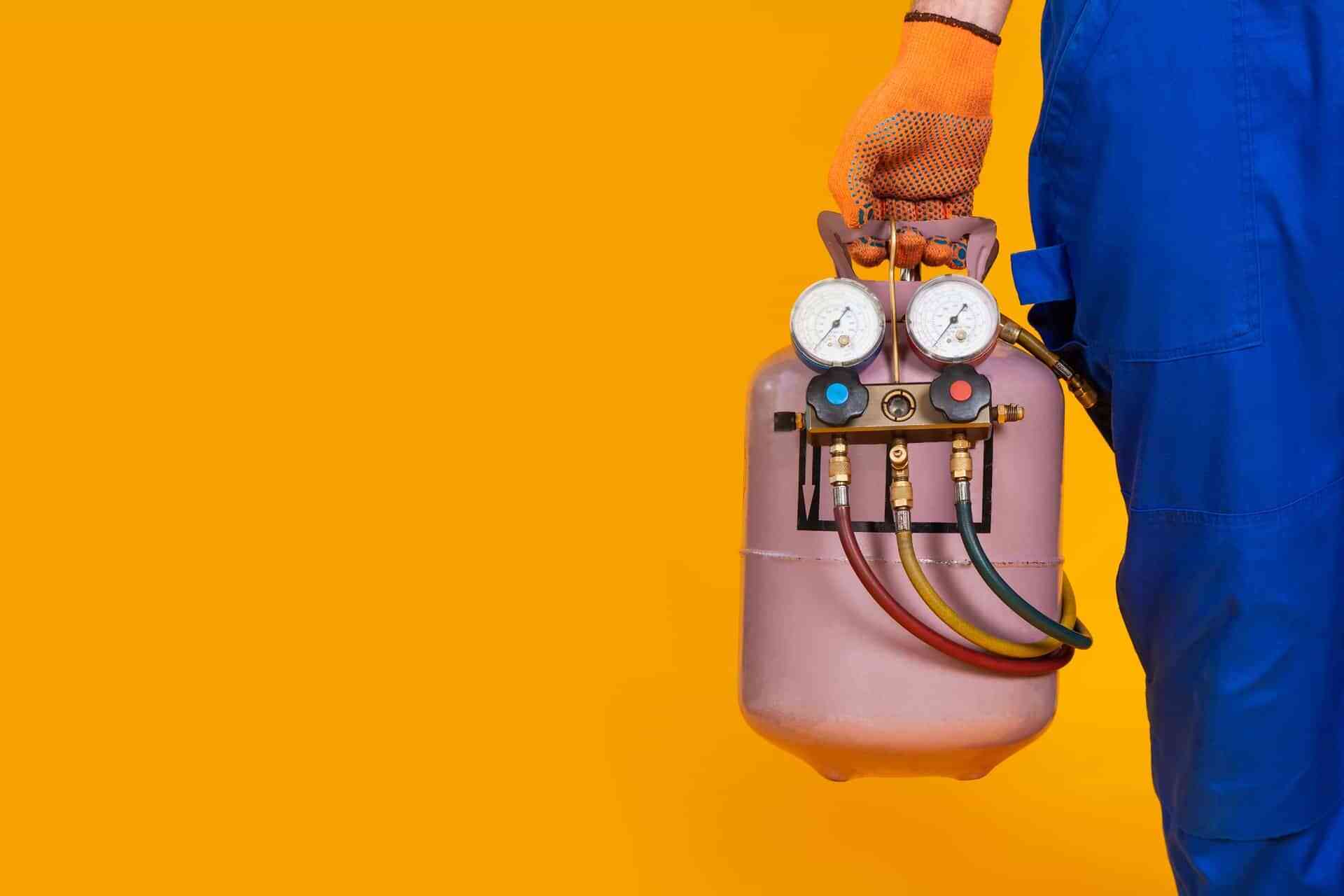
Freon is a trademarked name used for a group of chemical compounds known as chlorofluorocarbons (CFCs) and hydrochlorofluorocarbons (HCFCs).
You’ve probably heard of Freon in the context of air conditioning or refrigeration. But what exactly is it, and why is it essential for maintaining comfort in our homes and workplaces?
In this blog post, we’ll explore what Freon is, how it works in HVAC systems, its impact on efficiency and the environment, and why modern alternatives are becoming the new industry standard.
Freon is a trademarked name used for a group of chemical compounds known as chlorofluorocarbons (CFCs) and hydrochlorofluorocarbons (HCFCs). These substances have long been used as refrigerants in air conditioning and refrigeration systems.
One of the most commonly known types is R-22, a type of HCFC that was widely used in residential HVAC systems for many years due to its reliability and effective cooling properties.
Freon operates within a closed-loop system inside your air conditioner. Here’s how it works:
Absorption of Heat: Freon starts in a low-pressure, gaseous state and absorbs heat from the indoor air.
Compression and Condensation: The gas is then compressed and sent through coils, where it releases the absorbed heat outdoors.
Cooling Cycle: As it cools, it returns to a liquid state, ready to absorb more heat in a continuous cycle.
This process allows air conditioning systems to efficiently remove heat from indoor spaces, keeping environments cool and comfortable.
Freon is essential for effective air conditioning. Without it, your HVAC system wouldn’t be able to extract heat from indoor air and expel it outside, making cooling impossible.
Proper refrigerant levels help reduce strain on components like the compressor and condenser, preventing premature breakdowns and extending the system’s lifespan.
When refrigerant levels are optimal, your system runs efficiently, using less energy to maintain desired temperatures. Low Freon levels force your AC to work harder, increasing energy bills and system wear.
Despite its benefits, Freon has significant environmental drawbacks. CFCs and HCFCs are known to deplete the ozone layer, which protects Earth from harmful UV radiation. This led to health concerns, such as increased risks of skin cancer and cataracts, as well as broader climate change impacts.
In response, the Montreal Protocol, a global environmental agreement, mandated a phase-out of ozone-depleting substances. As of January 1, 2020, the U.S. banned the production and import of R-22, though recycled or reclaimed R-22 can still be used for older systems.
Modern air conditioning systems now use more sustainable refrigerants such as:
R-410A: Chlorine-free, more efficient, and less harmful to the ozone layer.
R-32: Lower global warming potential (GWP) than R-410A and increasingly used worldwide.
If your system still relies on R-22, it may be time to consider an upgrade. Switching to a newer system with an environmentally friendly refrigerant can reduce your carbon footprint, improve energy efficiency, and save on operating costs in the long run.
Freon has been a key player in the HVAC world for decades, enabling homes and businesses to stay cool and comfortable. However, due to its environmental impact, the industry is shifting toward greener, more efficient alternatives.
By understanding how refrigerants work and recognizing when it’s time to upgrade, you can make informed decisions that benefit both your comfort and the planet.
If you’ve been searching for “HVAC companies near me,” your search ends here. Gleason Heating and Air Conditioning is a trusted HVAC contractor serving Wauconda, IL, and the Northern Chicago Suburbs.
We offer same-day service for:
Furnace repairs
Frozen pipe repair
Leaking water heaters
New furnace installations
Air conditioner repair
Routine system maintenance
Our team is committed to complete customer satisfaction — and we follow up after each job to ensure it’s done right.
Contact us today for expert, reliable service and eco-friendly HVAC solutions!
© 2024 Crivva - Business Promotion. All rights reserved.